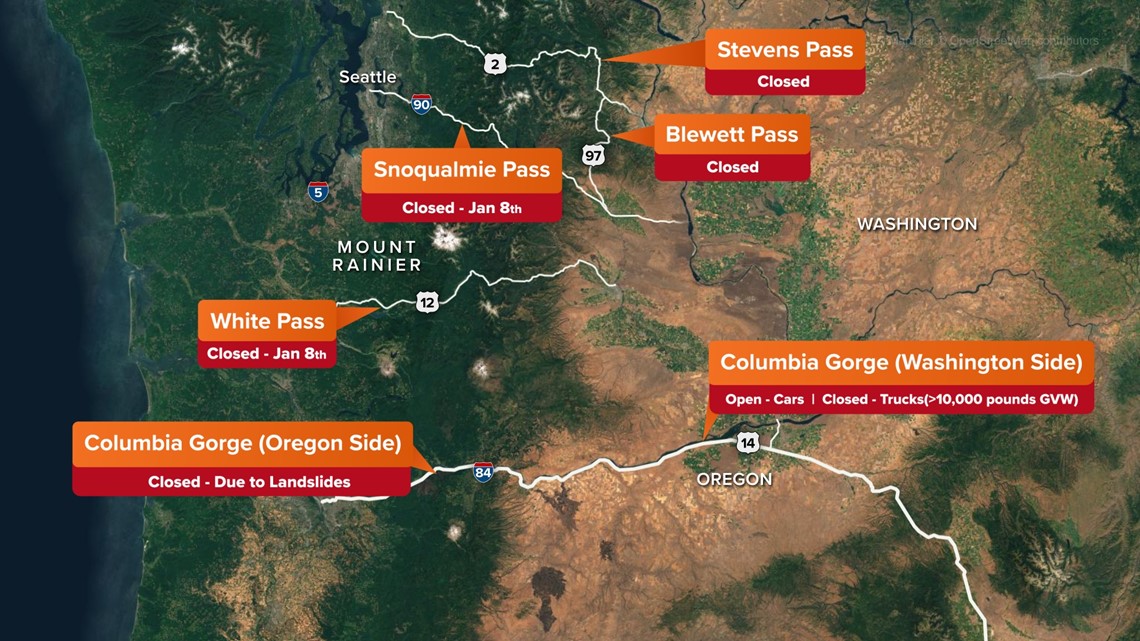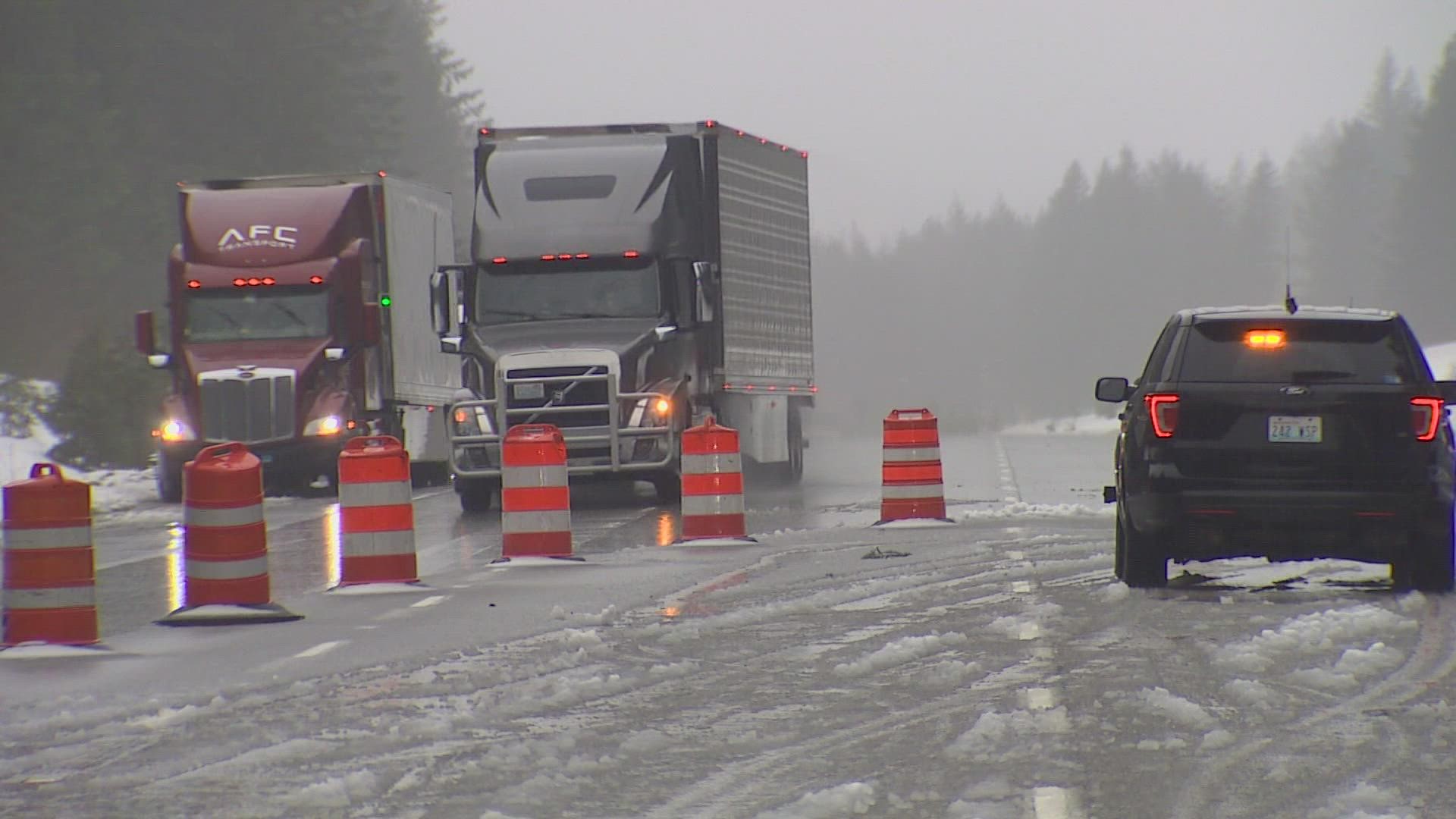SEATTLE — The Washington State Department of Transportation (WSDOT) closed the four main passes over the Cascades after the latest winter storm brought heavy snowfall to the mountains.
The WSDOT said Interstate 90 over Snoqualmie Pass, Stevens Pass on U.S. 2, White Pass on U.S. 12 and Blewett Pass on U.S. 97 will likely remain closed until Sunday.
Hazardous conditions in Washington include snow slides, falling trees, near-zero visibility and avalanche concerns that will increase when the snow turns to rain and freezing rain over the next few days, according to the WSDOT.
An Avalanche Warning is in effect for the Washington Cascades through at least 6 p.m. Friday, according to the Northwest Avalanche Center. There is “extreme” avalanche danger for Stevens Pass Friday. Backcountry travel should be avoided.
Drivers are urged to adjust plans for cross-state travel for the next few days.


Snoqualmie Pass is closed between North Bend (milepost 34) and Ellensburg (milepost 106).
Stevens Pass is closed from Scenic (milepost 58) and the west end of Leavenworth (milepost 99). The WSDOT said there is no detour available.
White Pass is closed from Packwood (milepost 135) and Oak Creek (milepost 183). The WSDOT said local traffic from the eastside is allowed up to the Lower Tieton Road at milepost 168.
Blewett Pass is closed from milepost 178, which is about 10 miles east of Cle Elum, to the junction with State Route 970 (milepost 149.7). The WSDOT said there is no detour available.
The WSDOT tweeted if it was safe to do so, crews would address avalanche issues on Friday and create a safe work zone.
Once the WSDOT determines the passes are safe for crews, workers will need to assess avalanche risk, do avalanche control, plow roads, clear debris and trees, clear overhead signs of snow and ice, and clear catch basins for drainage.
"We recognize the importance of these corridors but nothing is more important than the safety of our crews and the public," the WSDOT tweeted. "We are prepared to move in once it is safe, and we appreciate your patience during this challenging situation."
Snow Wednesday night into Thursday in Wenatchee buried sidewalks, driveways and cars. The National Weather Service (NWS) said people in the city received anywhere from 24 to 26 inches of snow. The NWS said the last 24-hour snow record for Wenatchee was recorded in 1971 at 17.7 inches.
“The hardest part was where do you put that much snow?” said Keith Parsons, who lives in Utah but is visiting family in Wenatchee. “We get a lot of snow [in Utah]. This would be even tough if I had a big our big snowblower. It only goes up maybe 18 inches. So, this was more than snow the blower could even do.
The city of East Wenatchee said it’s taking snowplows longer than normal to plow. The city expects to finish secondary streets on Friday.

